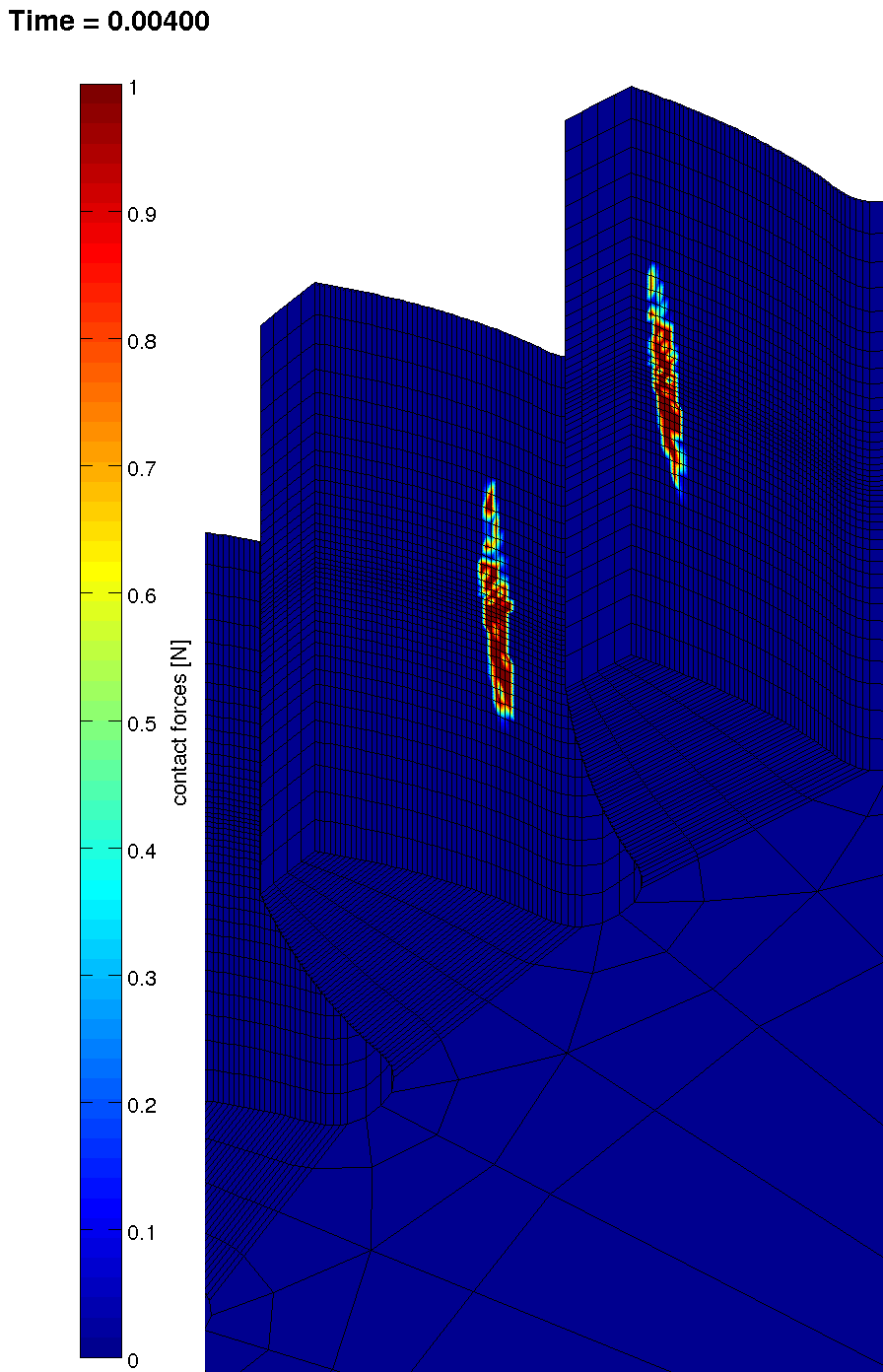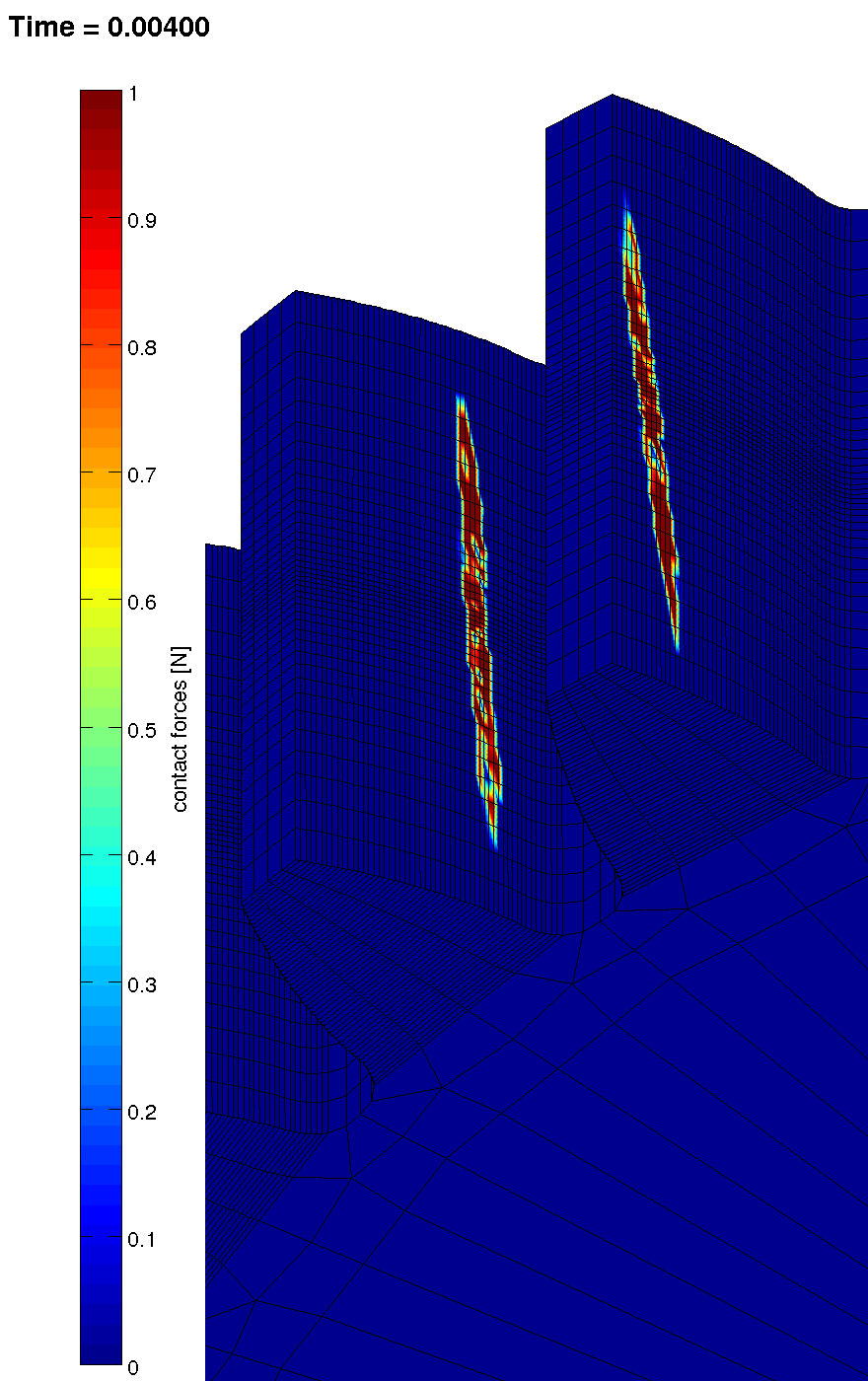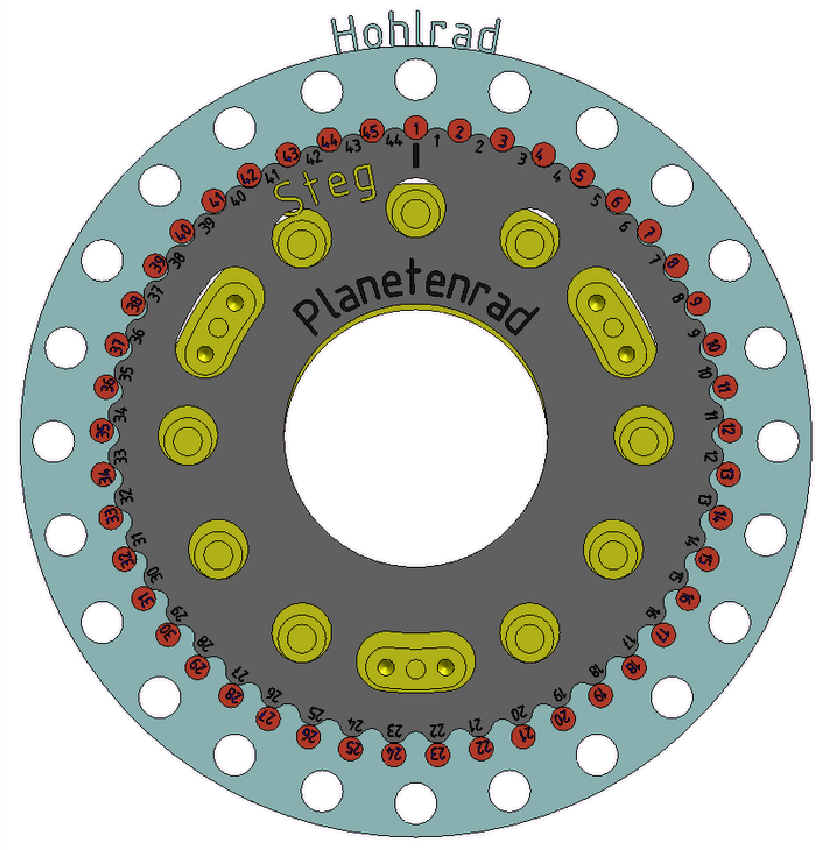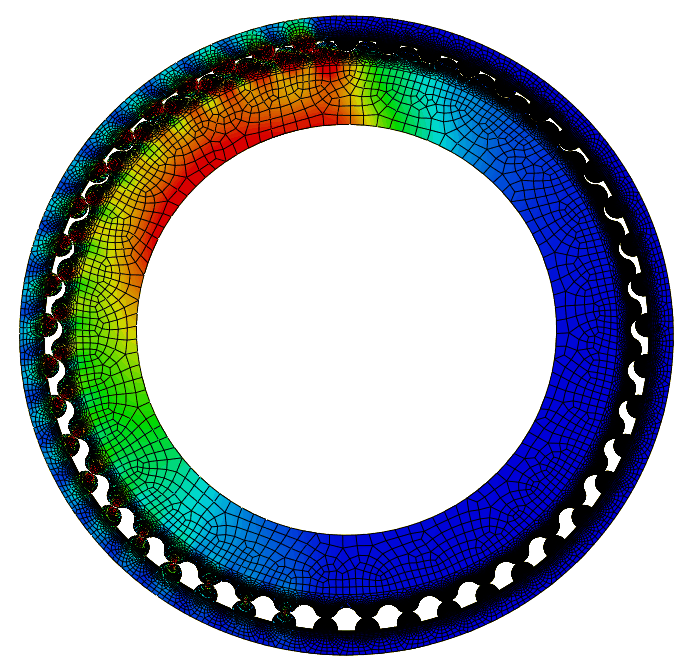 |
|
Description
In industry, the modeling and simulation of gear trains is most often done using commercial multibody system tools, where the gears are modeled as rigid bodies. In many technical systems when precise results are needed, the rigid multibody system approach does not meet the requirements but instead a fully elastic description is necessary. A very precise way to model elastic bodies is the finite element method (FEM), but the appropriately meshed gears lead to an enormous number of degree of freedom. In order to reduce the number of nodal finite element degrees of freedom and to increase computational efficiency, a approach of fully elastic multibody system (EMBS) including contact is developed by our institute. The approach is not only applied to the gears with standard flank profiles (involute gears), but also to the non-standard flank profiles, i.e. beveloid gears and cycloid gears. Simulation results between the two approachs, FEM and EMBS, show very good agreements.
Beveloid gears, also known as conical involute gears with very complex tooth shapes, gain more and more importance in industrial practice due to their abilities for power transmission between parallel, but also intersected and crossed axis. Moreover, due to the low sensitivity on manufacturing and assembly errors, as well as the possibility of small shaft angle and controllable backlash of a gear pair, beveloid gears have become the subject of attention for non-parallel axes transmission. The most familiar application of beveloid gears is the reduction gear used in marine transmissions, but in the last few years they have also been used increasingly often in the automotive industry. Theoretically, the bearing contacts of beveloid gear pairs under non-parallelly axes meshing are point contacts. For flexible bodies, the contact areas will enlarge to ellipses but still the contact ellipses are relative small leading to low durability of tooth surfaces because of high contact stress. To optimize the contact behavior, the gears normally need to be corrected. Applying the EMBS approach, the contact characteristics between tooth flanks during meshing can be studied. Figure 1 shows the contact patterns of a beveloid and involute spur gear pair before and after correction.
On the other hand, because the measurement of contact forces and force distribution is very complex and expensive, the numerical simulation of contact forces plays a very important role. However, a simulation of a gear pair in global system based on appropriate discretization of gears with FEM is impossible but a fully elastic multibody approach. In engineering, application of cycloid gear, see Figure 2 (left), is increasing because of small contructed space and very high transmission ratio. In cycloid gears, about haft of number of teeth comes into contact at the same time, see Figure 2 (right). It leads to a very small contact force per tooth or very high transmission ability.
Related Pages
Contact
|
|




